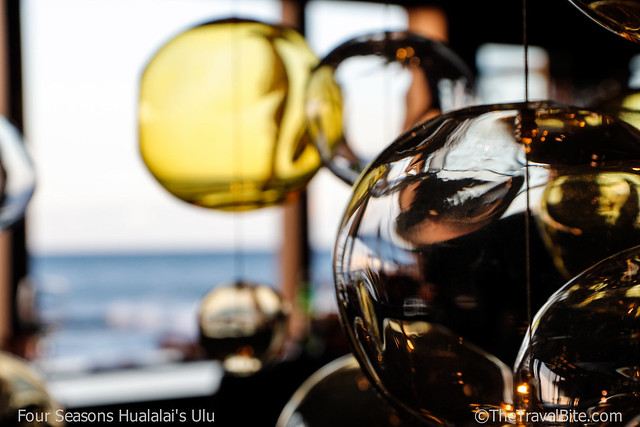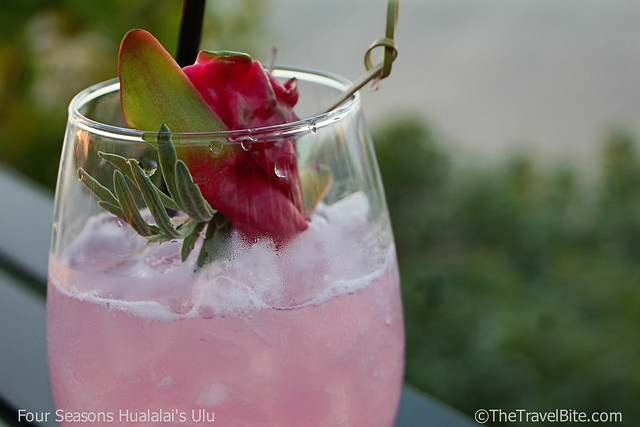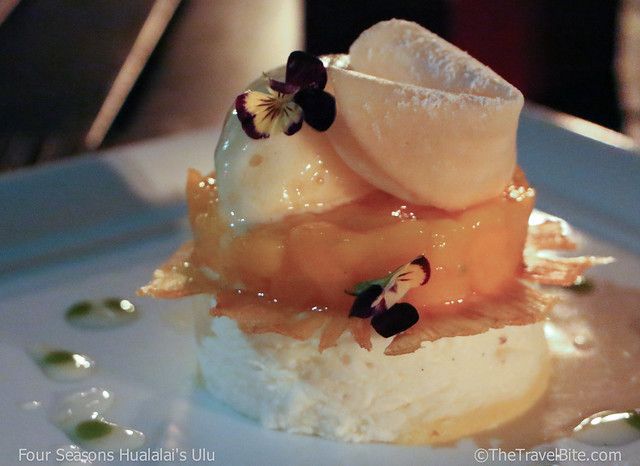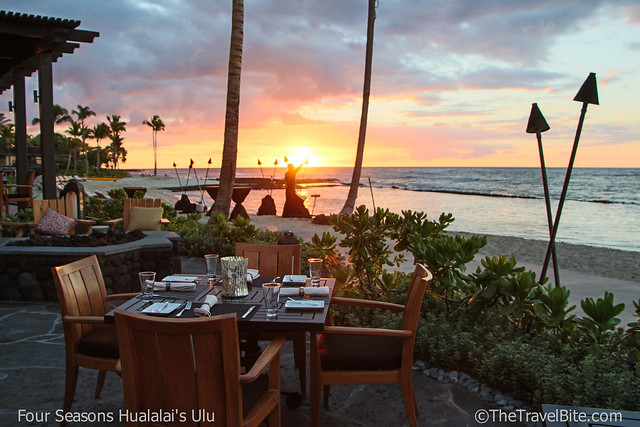While visiting Hawaii, I had the chance to enjoy dinner at Four Seasons Hualalai’s beachfront restaurant, ULU Ocean Grill. The name Ulu derives from the Ka’upulehu region’s history as this is the area where ancestral Hawaiian’s grew breadfruit. Ka ‘ulu pulehu meaning “the roasted breadfruit” and ‘ulu meaning simply: breadfruit.
I had the opportunity to sit down with Chef James Babian and talk a little bit about the menu and here is what he had to say:
How would you describe Ulu’s look?
The atmosphere here is fun, open and modern. We wanted to achieve a feeling of “fun dining” as opposed to fine dining. Every seat has a great view of the ocean and inside there are glass bubble partitions, mother of pearl on the ceiling, light sand colored tile, and local artwork. The bar is central to the restaurant which provides a good vibe and energy.
Since the restaurant’s name means breadfruit, do you feature it on the menu? What’s it like?
Indeed we do. Breadfruit tastes like a root vegetable or potato. We feature it as a chip and bar snack and incorporate it into several of our menu items. For example, we have our Ulu Crusted Mahi where we roast the breadfruit with olive oil and smoked Hawaiian sea salt, make a puree out of it, crush breadfruit chips up and mix with panko, spices, a little lemongrass, then crust the fresh mahi with that and pan sear it. We serve it over corn puree and fresh corn.
That sounds delicious! Are there a lot of local ingredients used on the menu?
Definitely. Our philosophy is “plant-to-plate.” We know we are guests here of the land and the island and we’ve done a lot to push sustainability. I was president of the local chapter of the American Culinary Federation and together we put together a committee to work toward sustainable agriculture. Now, every November, we have a farmer/chef symposium at the hotel. We invite all of our farmers, about 50-60 show up, and we put a wish list together to see what ingredients are available and what we can start to grow. From that meeting last year we got some major staples that are now grown here on the island instead of being imported from the mainland.
This sounds a lot like a Hawaiian word I learned today at the cultural center. “Kuleana,” for responsibility.
Yes. We feel it’s important and the right thing to do. Around 70% of the items on the menu are sourced locally. We focus on plant to plate, ingredient compatibility, good portions and a good value.
Well, I’d say the view alone makes it an excellent value!
Yes, it definitely does! Like I said, every table has a great view. We also have our fire pit now if you’d like to enjoy a pre-dinner or after-dinner cocktail and enjoy the outdoors.
I definitely plan on enjoying the outdoors and watching the sunset. Thank you for your time today.
Chef Babian prepared a tasting menu for me so that I could try a variety of dishes from Makai (the ocean) and Mauka (the mountain). Here are my favorite picks:
— Hawaiian ‘Ahi Poke with sea asparagus, ogo, Maui onions, white shoyo, and sesame oil.
— Roasted Kekela Beet Salad with smoked Puna goat cheese and a poha berry vinaigrette. (The poha berries grow locally on Mauna Kea and Mauna Loa mountain.)
— Kona Coffee Crusted Steak with Kiawe smoked potatoes and Kekela swiss chard.
The Fortunate Pineapple with Greek yogurt, caramelized pineapple, papaya, mango, pineapple sorbet, and a fortune cookie with a fact about the island.
This story was originally published on FourSeasonsMagazine.com







Leave a Reply